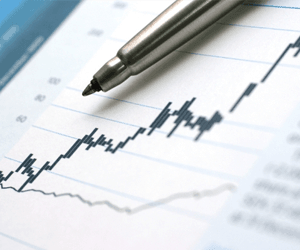Who can invest in ETFs?

Exchange traded funds (ETFs) are pooled investment vehicles that track the market performance of underlying financial indexes and commodities. They are single securities listed on stock exchanges and can therefore be traded like a company share.
In essence, one ETF share captures the performance of a diverse range of securities that constitute a financial index, or give exposure to a commodity without the explicit problems associated with storing it.
ETFs facilitate easy exposure to an extremely wide range of investments, including specific stockmarkets, industrial sectors, regions, asset classes and investment strategies, such as dividends or even foreign currency pairs. They can be traded at any time ‘intra-day’ i.e throughout the opening hours of stockmarkets, at a low cost in exactly the same way as stocks and shares. They can also be traded at the end of a trading day through the ‘primary’ market with ETF issuers.
ETFs represent one of the most successful and striking growth stories in global finance in recent decades. The first ETF was launched in the US in 1993 and seven years later they were introduced to Europe. Since those humble beginnings the ETF industry has grown exponentially. By the end of 2015 there was most likely more than US$2.9 trillion held in more than 4,400 ETF funds globally. The reasons for this success include growing interest in low cost index tracking investments and the advantages ETFs offer versus other investment vehicles. These can be summarised as:
- Efficiency – ETFs closely track indexes and commodity prices with low fees and charges
- Transparency – ETFs are traded openly with their prices easily available in real time and lists of the assets they hold and the fees they charge are easily available
- Flexibility – ETFs can be easily bought and sold throughout stock exchanges’ trading hours and provide access to both secondary and primary markets
- Diversification – One ETF share can represent investment in a wide variety of assets
ETFs are generally regarded as ‘passive investments’ in that they track indexes, such as the FTSE100 or a Corporate Bond Index, and the prices of commodities, such as gold or copper, without reliance upon the ‘active management’ or stock-picking of fund managers. There are already several hundred indexes globally as well as a range of commodities for ETFs to track and new indexes are being added every year.
ETF can be constructed in two ways. One is by physically buying the underlying assets that constitute an index, such as a basket of shares or bonds, or the respective commodity. The other method involves the ETF provider replicating the performance of an index or commodity by buying a financial instrument known as a swap from a specialist financial institution.
Both forms of replication work exceptionally well and are both regulated. In Europe for example, both types of ETFs are available under the rules governing Undertakings for Collective Investments in Transferable Securities (UCITS), which are based on a directive from the European Union and act as a quality mark for funds internationally.
Where applicable, ETFs will make income distributions to investors, for example from equity dividends or bond coupons, which provides investors an income stream.
Because ETFs are shares they can be bought and sold through stockbrokers and are often available on investment platforms, including online dealing services. Investors can view the prices of any ETF at any time and then they can decide the amount they wish trade. ETFs that trade on stock exchanges do not have initial or exit charges as such although the same trading fees and commission charges apply to ETFs as to any other stock-market listed securities. Interestingly, in some cases though there is no stamp duty to be paid, as is the case for ETFs listed on the London Stock Exchange.
The pricing of ETFs is both highly efficient and transparent. Any ‘premium’ or ‘discount’ on the quoted price in relation to the net asset value of the underlying assets is quickly adjusted in normal market conditions by the Authorised Participants (APs) or market makers who can create and redeem the ETF shares directly with ETF issuers. APs carry out trades to adjust the premiums and discounts, which are created by imbalances in demand and supply. This transparency helps maintain the efficiency of ETFs and enables trades of all sizes to be executed at the right prices. Indicative Net Asset Values (iNAVs), which reflect real time movements in underlying indexes, are published by many ETFs.